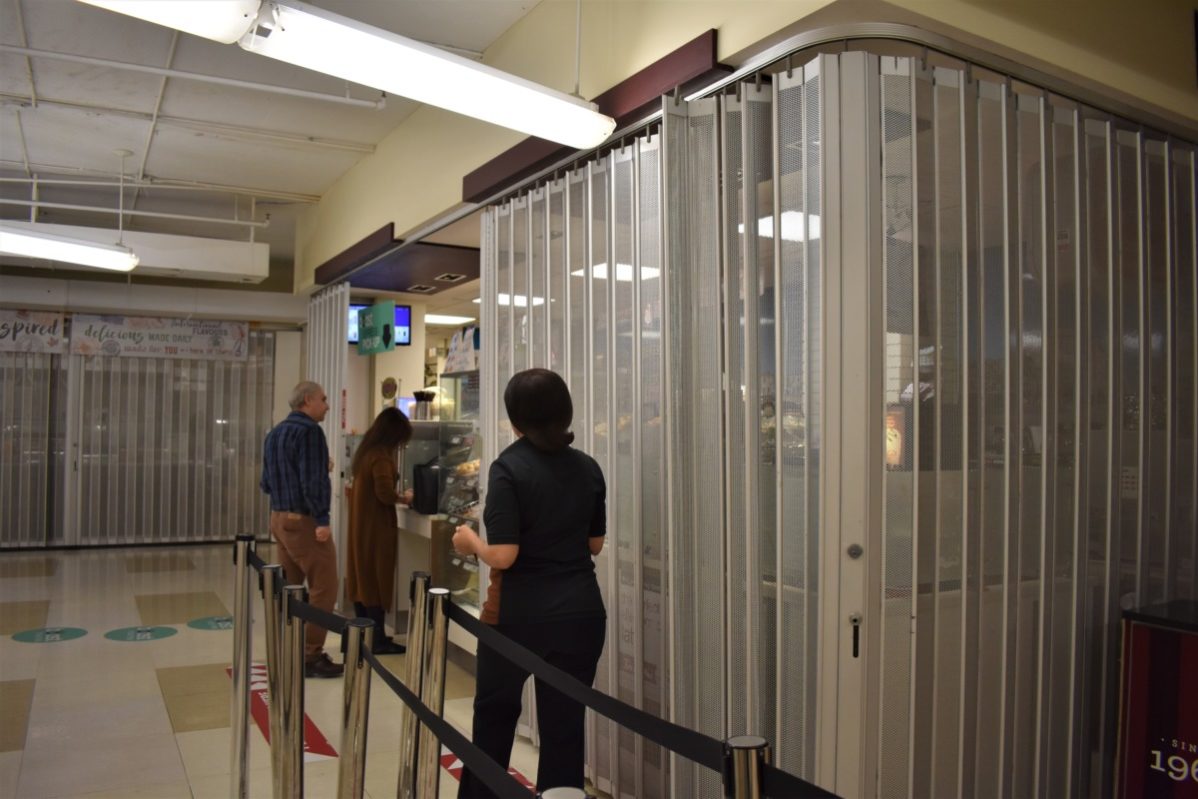GBC food service workers laid off, have hours cut, or transferred during faculty strike
Since the faculty strike began on Oct. 16, the lack regular campus traffic has taken a toll on the cafeterias at George Brown College.
The college has been keeping its more popular food services open, like Tim Hortons, but without their regular flow of customers food vendors have been shutting down and their employees not working.
At Casa Loma, out of a team of 20 to 24 food service employees, only three are currently working and the rest are laid off, according to the Workers United Canada Council, the union which represents food service workers at the campus.
“We base our schedule on the amount of business that we have,” explained Geoff Swift, senior manager for business services at George Brown. “We’ve tried keeping a number of units open and there’s simply insufficient costumers to keep the places operating. We are operating at a severe loss.”
The college was optimistic and kept all the services open during regular hours on the first day of the strike, but there wasn’t enough demand for them, so they have been closing them down slowly.
“We are going day by day, but certainly every day we have fewer costumers coming to the cafeterias,” said Swift.
Mathew Wong, Chartwells higher education dining services staff, usually works at the St. James campus, but now there’s no work him. “Everyone is getting their hours cut,” he said.
Wong has been working on campus for around 12 years and was a GBC student before, so he understands that strikes happen. Because of his experience, he has seniority and the company transferred him to work at a local university, but not everyone is having the same luck.
“It’s been hard to try to find work at the units because everyone else is doing the same thing,” said Wong.
New employees are the ones being most affected by this situation. A significant number of the staff just started working at the cafeterias and don’t have the seniority to be transferred.
“They don’t have the history with anyone else within the company, and I don’t think they will be working. I know a lot of them are afraid because the live paycheck to paycheck,” said Wong.
Casa Loma food service workers have a contract that sets rules for how layoffs take place.
“The employer cannot act arbitrarily, they must follow seniority in making layoffs. They also have to make sure that management staff is not doing bargaining unit work when workers are laid off,” explained Ryan Hayes from the Workers United Canada Council.
Hayes said the union supports the faculty who are on strike, and added that the food service employees have to ask for their benefits.
“Food service workers need to apply for EI benefits,” said Hayes. “Their employer needs to provide them with a ROE (record of employment) document so that they can apply,” said Hayes.
Things should go back to normal right after the strike ends, or even if something in between results in a higher demand.
“The staff knows to be ready to come back as soon as we are advised by the college that student business is resumed or if any other factor causes more customers coming in,” explained Swift.
The union wants any changes to people’s schedules to be announced in advance.
“It is difficult for an employer to predict when a labour disruption will end, however, they should give employees as much notice as possible, and be flexible in accommodating them,” said Hayes.


